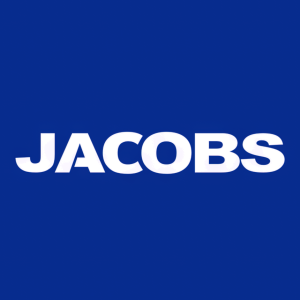Jacobs to Optimize Data Centers with NVIDIA AI Factory Digital Twin Blueprint
Rhea-AI Summary
Positive
- Partnership with NVIDIA for AI factory digital twins implementation enhances Jacobs' technological capabilities
- Potential for new revenue streams through data center optimization services
- Demonstrated expertise with major projects like the 1.2-gigawatt SINES DC Campus
- Strong market position with $12 billion annual revenue and global presence
Negative
- None.
News Market Reaction 1 Alert
On the day this news was published, J declined 0.25%, reflecting a mild negative market reaction.
Data tracked by StockTitan Argus on the day of publication.
Digital twins drive efficiency and resiliency of AI factories
Blueprint to create more reliable power, cooling and network ecosystems
Jacobs will test and enhance the end-to-end blueprint workflow, enabling accurate simulations of facility equipment efficiency, throughput and resiliency. Created to unify the design and simulation of billions of components to build digital twins of AI Factories, the blueprint will introduce new integrations across the AI Factory's power, cooling and network ecosystems. Through this collaboration, engineering teams can design, simulate and optimize factories within physically accurate virtual environments, enabling early issue detection and the creation of smarter, more reliable facilities.
"For more than a decade, Jacobs has used digital twin technologies for clients in water and transportation—revolutionizing the way we design, build, operate and maintain critical infrastructure," said Jacobs Executive Vice President Koti Vadlamudi. "Now, AI data centers are being built and intelligently designed with digital twins— creating precise, real-time replicas of physical infrastructure to predict potential issues, optimize operations and positively influence energy consumption — ensuring a more connected and sustainable future for our communities."
Jacobs is solving complex production load challenges globally across the Data Center, Energy and Water sectors. At
At Jacobs, we're challenging today to reinvent tomorrow – delivering outcomes and solutions for the world's most complex challenges. With approximately
Certain statements contained in this press release constitute forward-looking statements within the meaning of the Private Securities Litigation Reform Act of 1995. Forward-looking statements are statements that do not directly relate to any historical or current fact. When used herein, words such as "expects," "anticipates," "believes," "seeks," "estimates," "plans," "intends," "future," "will," "would," "could," "can," "may," and similar words are intended to identify forward-looking statements. We base these forward-looking statements on management's current estimates and expectations, as well as currently available competitive, financial and economic data. Forward-looking statements, however, are inherently uncertain. There are a variety of factors that could cause business results to differ materially from our forward-looking statements including, but not limited to, uncertainties as to, the timing of the award of projects and funding and potential changes to the amounts provided for under the Infrastructure Investment and Jobs Act and other legislation and executive orders related to governmental spending, including any directive to federal agencies to reduce federal spending or the size of the federal workforce, and changes in
For press/media inquiries:
media@jacobs.com
![]() View original content to download multimedia:https://www.prnewswire.com/news-releases/jacobs-to-optimize-data-centers-with-nvidia-ai-factory-digital-twin-blueprint-302458115.html
View original content to download multimedia:https://www.prnewswire.com/news-releases/jacobs-to-optimize-data-centers-with-nvidia-ai-factory-digital-twin-blueprint-302458115.html
SOURCE Jacobs









